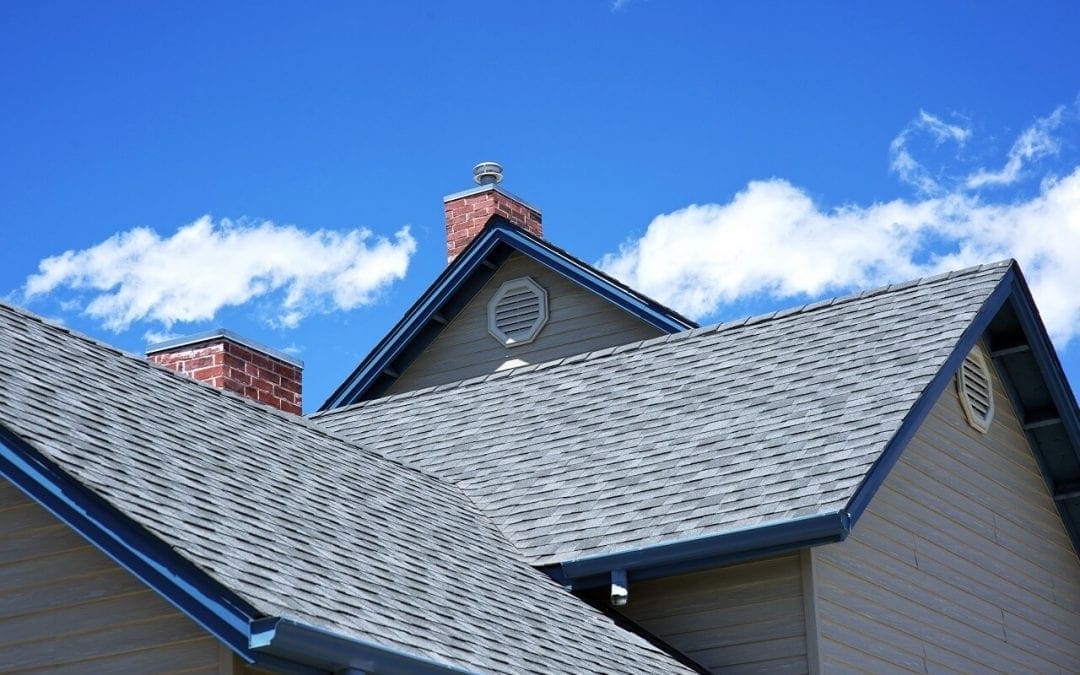Roofs play a fundamental role in protecting your home, family, and belongings from the elements. Roofing materials differ on longevity, durability, price, installation costs, energy efficiency, and aesthetics. If you need a new roof, explore the pros and cons of different types of roofing materials.
Asphalt Shingles
Asphalt shingles are the most common roof type in the United States and have been in use for more than a century. Modern asphalt shingles are often made of fiberglass and covered with asphalt and ceramic granules to increase their performance.
Asphalt shingles are rated well for fire-resistance and are available in a wide range of colors and styles. They are an affordable, durable, and easy-to-install option that are able to withstand extreme temperatures.
The downsides to asphalt shingles include the fact that they can be broken or damaged by high winds and hailstorms. In extreme climates, you may only get 10 – 15 years from standard asphalt shingles. This type of roofing material can be affected by mold or algae which may lead to shingle damage and roof leaks.
Wood Types of Roofing Materials
Wood shingles and shakes are most commonly made from pine, redwood, cypress, or western red cedar. They are mostly used in bungalows, cape cod-style homes, and cottages. However, they are versatile enough to work with a variety of home styles.
If treated, wooden shingles can offer fire-resistance. They have a longer lifespan than asphalt. Many people appreciate the natural beauty of wood and this will boost a home’s aesthetic. Wooden shingles have good insulation properties and offer better energy-efficiency than asphalt shingles.
Disadvantages to choosing wooden roofing materials include the higher maintenance required to keep shingles in good shape. If left untreated, these materials are not insect or fire-resistant. They will need to be treated and cleaned to prevent the growth of mold, moss, and algae. Repair costs can be higher for a wooden roof.
Slate Tiles
This is a classic style of roofing material made from stone. Slate is a natural product and many homeowners appreciate the visual appeal of this material.
Slate is one of the most durable roofing materials available, lasting as long as 150 years. It is impervious to insects and moisture and is fire-resistant. Another advantage is that slate roofing is energy-efficient and requires very little maintenance.
Two major drawbacks to slate roofing are the cost of the product and the fact that it is heavy. Not many homes can support the weight of this material and must be structurally reinforced before slate roofing can be installed. Slate tiles are also expensive to install.
Metal Types of Roofing Materials
Metal roofs have recently enjoyed an increase in popularity due to their unique features and the introduction of new, modern styles. The most common metals used with this type of roofing are aluminum, zinc, lightweight steel, and copper.
Metal roofing is available to mimic shingles, slate, and tile. These styles are available in dozens of colors. Metal roofing has a longer lifespan than shingles, ranging from 50 to 100 years. Metal is fire-resistant, won’t attract insects, and most types are 100% recyclable at the end of their life. Metal reflects the rays of the sun which helps reduce cooling costs. It is also durable, won’t crack, and is rust-resistant.
The main disadvantage to metal roofing is the aesthetic. Even though there are plenty of options available, many homeowners don’t like the look of metal. Metal is slightly more expensive to install than wooden roofing or asphalt shingles. This material is noisier in heavy rains and metal can dent if it sustains a heavy impact.
When shopping for a new roof for your home, look at the pros and cons of each type of roofing material. You’ll find a style that fits the look of your home and your budget.
Homeworx Services, Inc. offers home inspection services to customers in Northern Virginia. Contact us to request an appointment.

